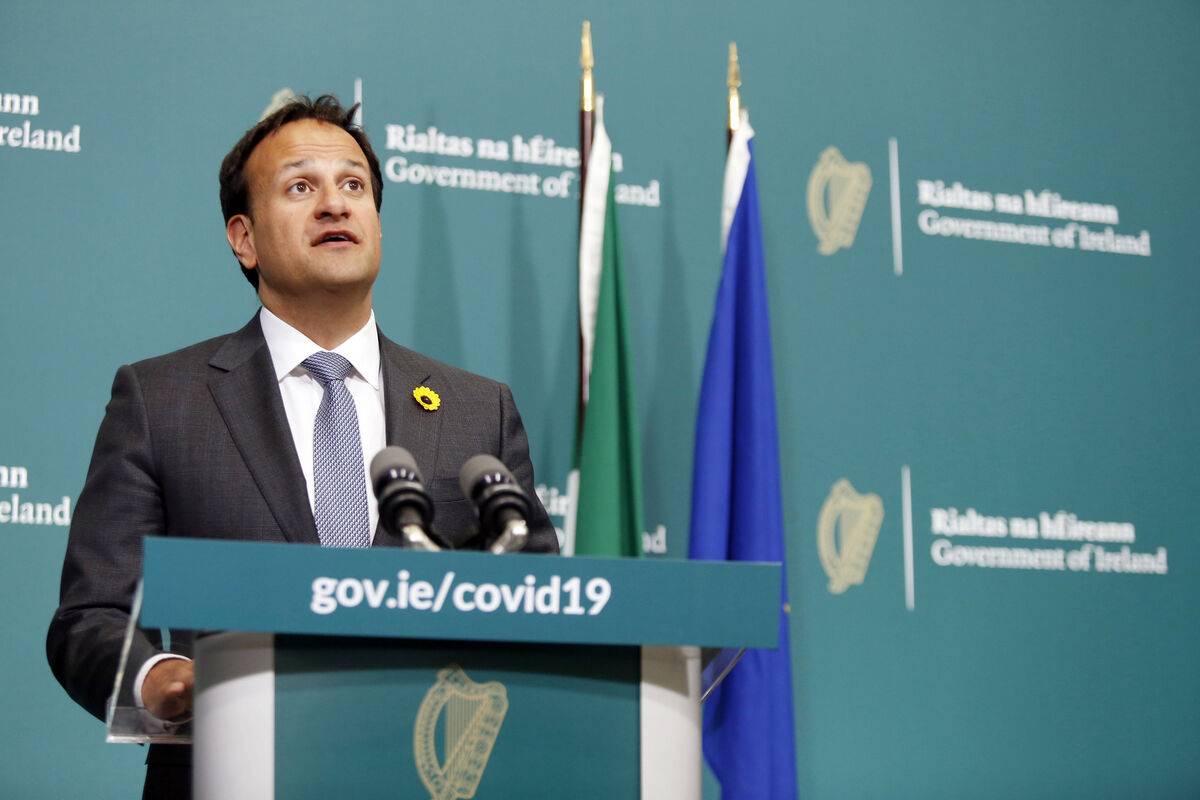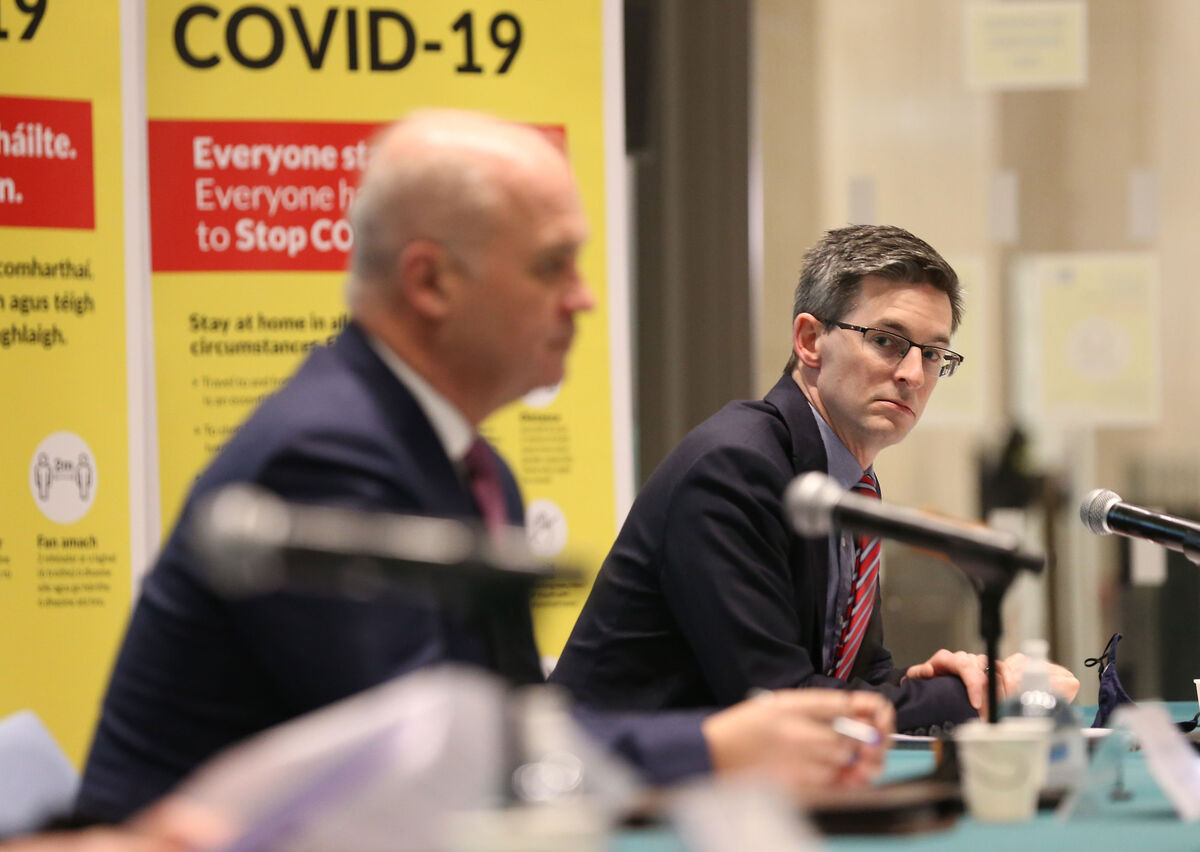Daniel McConnell: How we calculate Covid deaths really does count

Ahead of next week’s announcement about our next step as a country on the path to freedom, it is legitimate to question whether the higher number of deaths reported allowed the case for extending lockdown to be made easier. Picture: Sam Boal/Rollingnews.ie
Every night, many of us tune into the news to hear the latest numbers.
Not the lotto numbers, but the latest number of deaths and cases from Covid-19.
There have been days of relief when no new deaths were reported, but there have been very sobering days when a large number of deaths have been confirmed.
But when is a Covid death not a Covid death?
Last Sunday, an interesting story appeared about the accuracy of how Covid-19 deaths in Ireland are being recorded.
ran the story which said death figures reported by the National Public Health Emergency Team (Nphet) “do not have a scientific basis”, according to the Mayo coroner Patrick O’Connor.
The story told us that O’Connor claims that many of those recorded as having died from Covid-19 were already suffering with other underlying illnesses that may have caused their deaths.
O’Connor, who acts as a public information officer for the Coroners Society of Ireland, said that recording Covid-19 as the principal cause of death when a person was already terminally ill raised questions about the accuracy of the figures.
Then on Tuesday, Mark Coughlan on RTÉ’s , explored the matter of just how many extra deaths have been caused by the Covid-19 pandemic.
His report showed that an analysis of RIP.ie data by researchers at Maynooth University and the University of Limerick indicates that around 3,200 more people died in the Republic of Ireland between March 1, 2020, and February 28, 2021, than would have died in a typical 12-month period.
The figure, which has been adjusted for duplication and overseas deaths notified on the website, gives a strong indication of what statisticians refer to as "excess mortality".
It represents a 10% increase on the norm, with most of the increase occurring during two major spikes of the virus.
But percentages only tell part of the story, obscuring the real-life impact and the lives lost.
In absolute numbers, Dublin and Cork were hardest hit, Coughlan reported.
Some 1,100 more people would still be alive in the capital were it not for Covid-19; in Cork, that number is 500.
“We don’t know who exactly, we don’t know where, and we don’t even know what exactly caused their deaths," he said.
While the data suggests that 3,200 more people died than usual between March 2020 and March 2021, the Department of Health said there were 4,319 Covid-related deaths in the same period.
But how did the Department of Health arrive at the much higher figure of Covid-related deaths compared to the Maynooth research?
It is a point often overlooked but in Ireland, unlike many other countries, we record Covid deaths as being anywhere the virus was present in the body as opposed to being the predominant cause of death.
Responding to a Hiqa report in June 2020 about the gulf between reported Covid-19 deaths and “excess deaths,” then taoiseach Leo Varadkar admitted Ireland’s approach “skews” the numbers.

Excess deaths in Ireland from March to June were "substantially" less than the officially reported Covid-19 figures, the analysis found.
"There were about 1,100 to 1,200 more deaths than we would expect based on historical patterns; a 13% increase between 11 March to 16 June,” the report concluded.
"However, the number of excess deaths is substantially less than the reported 1,709 Covid-19-related deaths over the same period."
Hiqa found that the officially reported Covid-19 deaths likely overestimates the true burden of excess deaths caused by the virus.
“The gap is interesting but not a surprise,” Varadkar said. "In Ireland we counted all deaths, in all settings, suspected cases even when no lab test was done, and included people with underlying terminal illnesses who died with Covid but not of it."
When asked about this by my colleague Niamh Griffin in January, Dr Tony Holohan defended the method used to calculate the deaths.
"We follow the WHO (World Health Organization) method in counting all deaths where there has been a laboratory result (of Covid) in people who died, the medical practitioner will certify the death (as being a Covid death)," Dr Holohan said.
"That is different to the way in which other countries count but it is the way which we have always done it,” he said.

Last Monday, his deputy Dr Ronan Glynn was pressed on how deaths are calculated and he too gave a trenchant response.
“We made it clear from day one that we have reported all deaths either because of, or with, Covid-19," Dr Glynn said.
"And as a result of that, I vividly recall last year — our reporting rates being compared very unfavourably with countries across the world,” he said in reference to early comparisons with the UK in March 2020.
“We took a view on this early on — we have been entirely transparent throughout."
"We have just come through a significant wave (of infections). We have seen very clearly in the data coming through, that we had significant excess mortality in the first six weeks of this year," he said.
“Equally if there is an inference in any way that because people with underlying conditions die with Covid, in some shape or form we should not be reporting those deaths I would dispute that completely and utterly,” he insisted.
“There has been this implied assertion — we (Nphet) should not be reporting deaths of people with any (underlying) conditions, for some reason that is not important.
"That is a very dangerous path for us to go down as a society,” he said.
“Certainly, there are a proportion of deaths where people die with Covid as opposed to (directly) because of Covid, but in time we can look at all of this. We have been transparent,” he said.
The facts here are important.
It is a fact that Ireland, in comparison to other countries, has run a more inclusive set of death numbers which has an inflationary effect.
It is a fact that Ireland has been subject to a much longer lockdown than many other EU countries.
It is a fact that notwithstanding the arrival of variant strains, the virus is far more deadly to elderly people and those with underlying conditions.
Either by way of design or by habit, it has become the norm to report and present all deaths as ones caused by Covid.
As Dr Glynn said himself this week, that is not entirely accurate.
Much better to be on the side of transparency than be accused of hiding or under-reporting as the UK were to found to have done.
However, ahead of next week’s announcement about our next step as a country on the path to freedom, it is legitimate to question whether the higher number of deaths reported allowed the case for extending lockdown to be made easier.
A proper debate about how we calculate the deaths in Ireland is warranted as we begin to learn the lessons of this 15-month-old nightmare.











